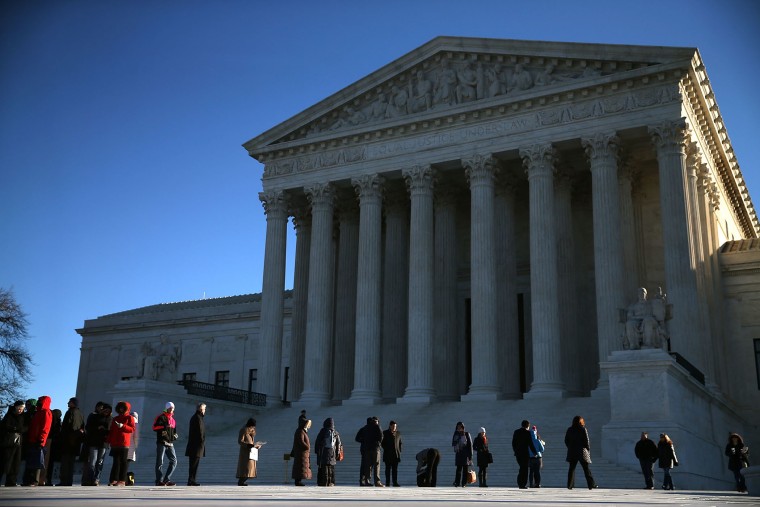North Carolina Republican leaders may be radicalized to an alarming degree, but they're also competent enough to achieve their goals. It's not easy, for example, to take a state where voters are roughly divided evenly between the parties, and then draw the congressional district lines so that Republicans hold 10 of the state's 13 seats, turning roughly 50% of the vote into 77% of the power.That is, however, precisely what GOP officials in North Carolina did in one of the most ridiculous contemporary examples of gerrymandering in the country. It's also a map that the U.S. Supreme Court struck down yesterday as illegal.
The U.S. Supreme Court Monday threw out North Carolina's maps for two of the state's 13 congressional districts, a ruling that former attorney general Eric Holder called "a watershed moment in the fight to end racial gerrymandering."In drawing the boundary lines for both districts, race was the predominant factor and the state failed to offer a compelling justification, the court said.
The full ruling in Cooper v. Harris is online here. Note that the majority included the court's four center-left jurists -- Kagan, Sotomayor, Ginsburg, and Breyer -- who were unexpectedly joined in this decision by, of all people, Clarence Thomas. (It was a 5-3 ruling, since Gorsuch did not participate. The case was heard before his confirmation.)The key takeaway of a ruling like this is about establishing some boundaries. When state lawmakers draw district lines following a decennial census, they're legally permitted to consider race as a factor, but as Vox's report explained, "to use race as a predominant factor, the state has to have a compelling interest. For example, a state can say that it needs to, under the federal Voting Rights Act, consider race to ensure that a minority voting bloc isn't consistently negated by a larger set of white voters who vote against the minority voting bloc's preferred candidate."That's not what North Carolina Republicans did. In fact, they did largely the opposite, working with remarkable precision to isolate minority communities, not to advance a compelling state interest, but to maximize partisan GOP power by deliberately diminishing the voting power of people of color.The Supreme Court said yesterday that this is a step states cannot take.There's some debate in legal circles about the scope of yesterday's ruling and how much it can be used by voting-rights advocates, but the broader pattern of recent rulings gives them some cause for optimism. The Nation's Ari Berman noted yesterday, "[T]hese GOP efforts are increasingly running afoul of the courts, who've now struck down GOP-drawn redistricting maps in Alabama, Florida, North Carolina, Texas, and Virginia -- all states that previously had to approve their voting changes with the federal government under the Voting Rights Act."For more, election-law expert Rick Hasen's perspective is always worthwhile, and he wrote a detailed analysis on his blog yesterday, and a Washington Post op-ed today.
